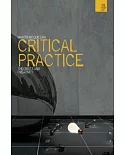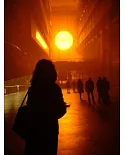Abstract expressionism is a historical narrative within which the bold and dynamic work of such artists as Jackson Pollock, Willem de Kooning, Franz Kline, Barnett Newman, and Mark Rothko
acquire meaning and significance. The narrative was crafted in the 1940s and 1950s by bold and dynamic critics such as Clement Greenberg, Harold Rosenberg, and Meyer Schapiro, who used the
new art to deepen their work and strengthen their roles as cultural critics at a moment when the stakes for national art and culture on an international stage were unusually high.
Daniel A. Siedell’s essays in An Excavation of Tenth Street explore this complex relationship between the art and the criticism by focusing attention on the intentions of
the critics themselves, particularly Greenberg and Rosenberg. These essays suggest that the failure of art historians to recognize their own intentions have distorted the relationship
between art and criticism. It is only by engaging the art criticism, disentangling its often-divided loyalties, and understanding its complex relationship to the art it purports
to interpret that the integrity and primacy of the art itself can be excavated,” revealing it to transcend the fascinating and compelling discourse it generates.





















